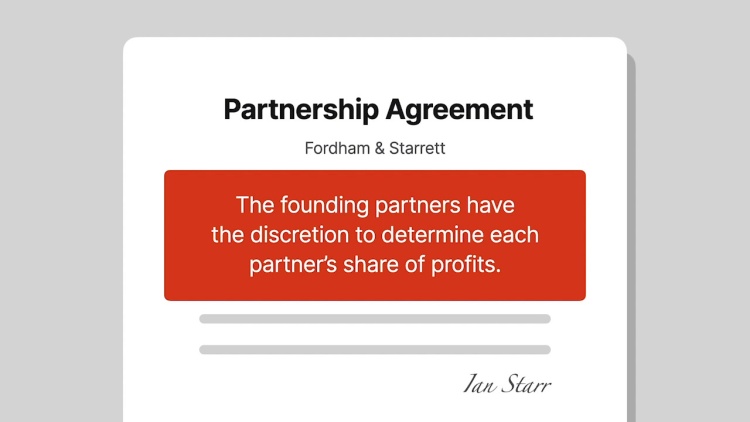Starr v. Fordham
Massachusetts Supreme Judicial Court
648 N.E.2d 1261 (1995)
- Written by John Caddell, JD
Facts
Ian Starr (plaintiff) was a partner in the law firm Fordham & Starrett (F&S) (defendant) from the firm’s founding in March 1985 to December 31, 1986. F&S’s partnership agreement gave Laurence Fordham and Loyd Starrett (the founding partners) (defendants) the authority to determine each partner’s share of the firm’s annual profits. For the year 1985, the founding partners divided the profits equally. In 1986, however, Starr was awarded only 6.3 percent of the profits, while the founding partners and others received substantially larger shares. Starr sued F&S and the founding partners, alleging that they had breached their fiduciary duty to him as well as the implied covenant of good faith and fair dealing. The trial court found that Starr had billed roughly 15 percent of the firm’s total billable hours, more than double the percentage of profits he received. The court further determined that the founding partners had deliberately selected criteria for profit distribution in order to minimize Starr’s share. The court therefore ruled in Starr’s favor and awarded him over $75,000 in damages from lost profits. The founding partners appealed, arguing that the trial court improperly assigned them the burden to demonstrate fairness; that the business judgment rule shielded their decision; and that the ruling that they violated their fiduciary duty and the implied covenant of good faith and fair dealing was clearly erroneous.
Rule of Law
Issue
Holding and Reasoning (Nolan, J.)
What to do next…
Here's why 899,000 law students have relied on our case briefs:
- Written by law professors and practitioners, not other law students. 47,000 briefs, keyed to 994 casebooks. Top-notch customer support.
- The right amount of information, includes the facts, issues, rule of law, holding and reasoning, and any concurrences and dissents.
- Access in your classes, works on your mobile and tablet. Massive library of related video lessons and high quality multiple-choice questions.
- Easy to use, uniform format for every case brief. Written in plain English, not in legalese. Our briefs summarize and simplify; they don’t just repeat the court’s language.





